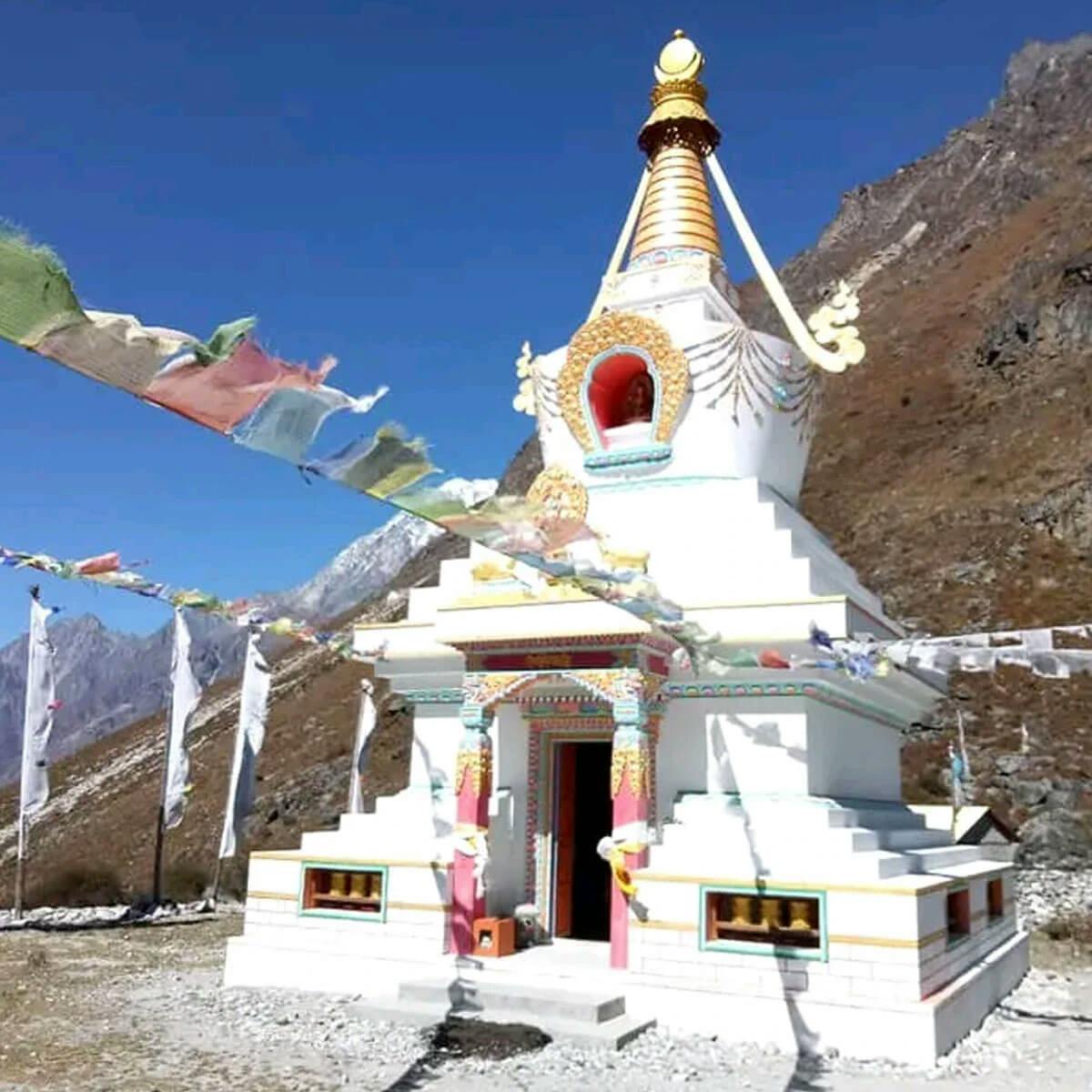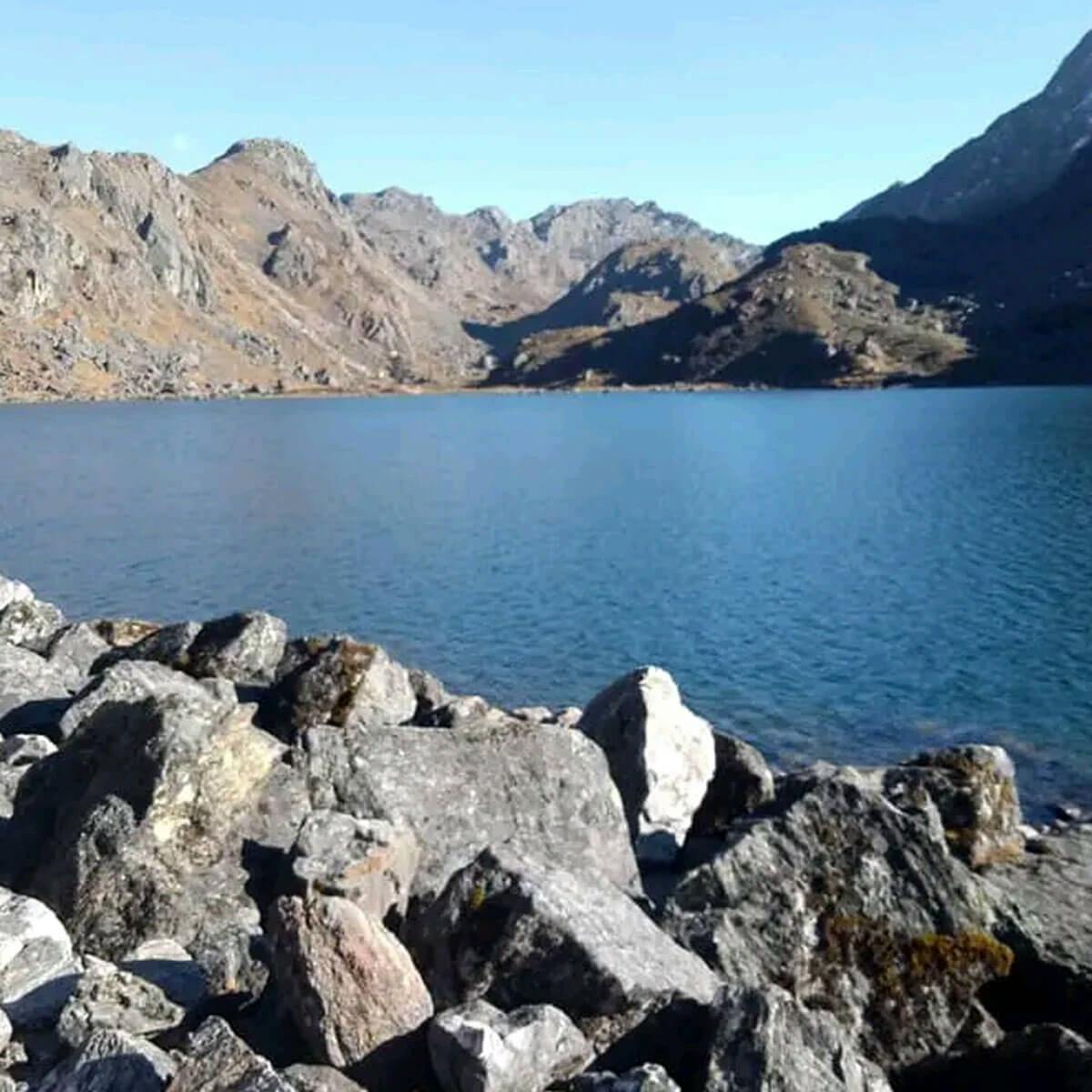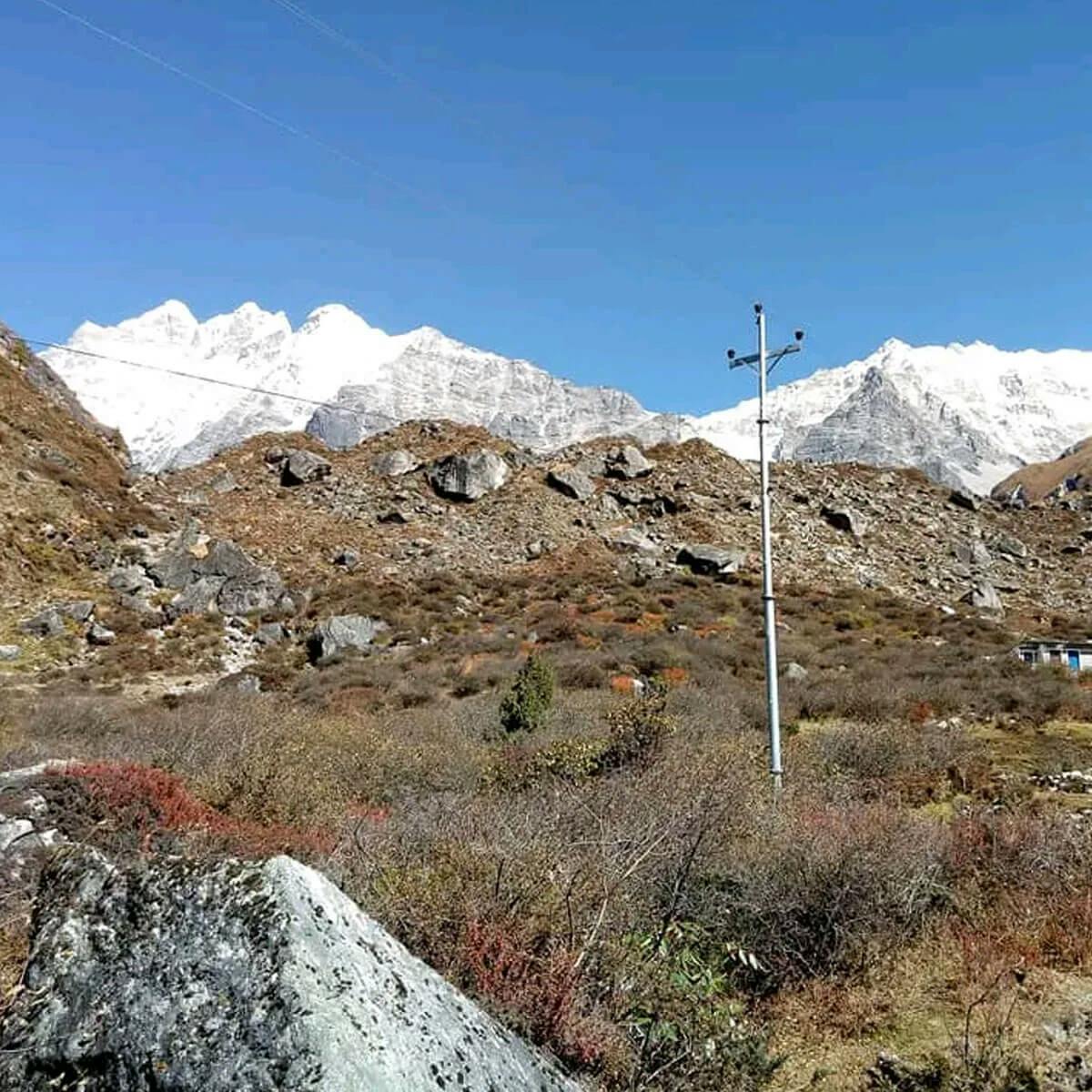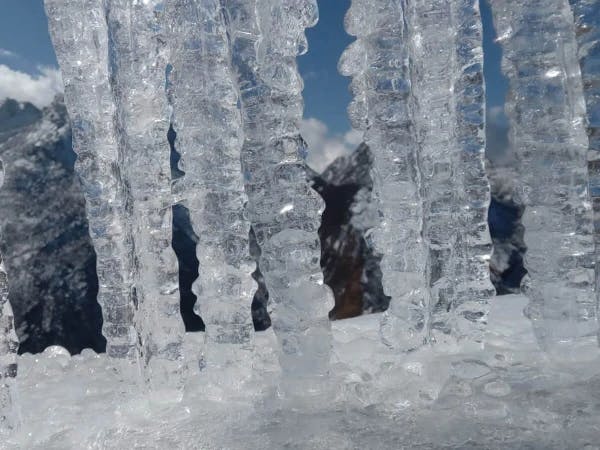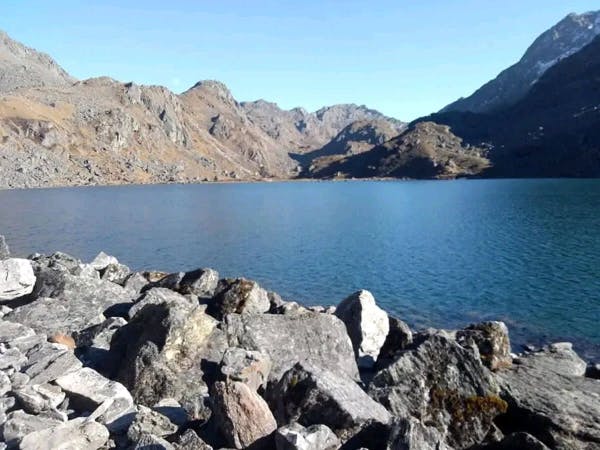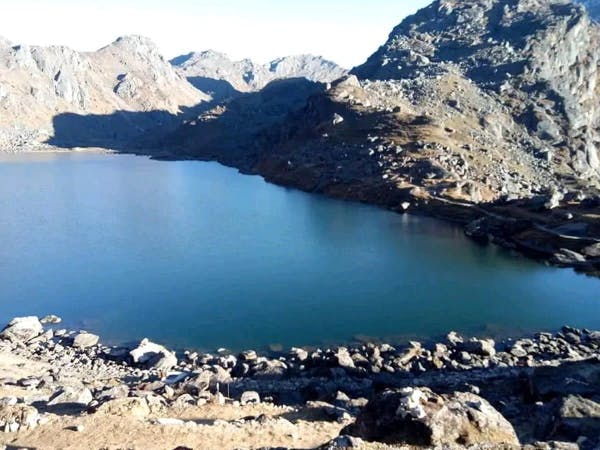We ended up with this trekking organization because we were staying in an accommodation belonging to the same family. Poorly
A dream journey of every adventure seeking an extraordinary authentic tea house trekking and aspire to meet and mingle with the rich culture of Tamang and Sherpa communities along with the region's historical and religious landmarks, followed by a side trip to the pious lake of Gosaikunda, is the Langtang Valley with Gosaikunda Lake Trek.
It is why a hike to the Langtang Valley with Gosaikunda Lake is often referred to as the best cultural odyssey in Nepal, which has been rising in peak popularity due to its easy accessibility from the capital city of the country, which is just 122 kilometers away.
Furthermore, as the Langtang Gosaikunda Lake excursion takes place under the stretches of the Langtang National Park, you will get to discover the pristine Himalayan ecosystems and their wide ranges of flora and fauna, other than the spectacular natural formation of Himalayan glaciers, cascading waterfalls, and river streams, which, on reaching completely to the north of Kathmandu, provide an amazing glimpse at Tibet from the border.
Therefore, the Langtang Gosaikunda Lake expedition is one of the top-notch trekking destinations in the Himalayas of Nepal, embracing the tranquil Himalayan air, Langtang mountain ranges, the raw Himalayan wilderness, and the unpolluted daily lifestyle of the native Himalayan locals devoid of modern amenities that have been weakening the true connection of humans with mother nature.
Trek Highlights
- Incredible scenic drive from Katmandu and vice versa.
- Venture into Tibet’s frontier area, the Langtang region, renowned as the valley of glaciers.
- Explore the rich biodiversity of Langtang National Park by making your way through terraced farmland, lush meadows, pine, and rhododendron trees.
- Get the alluring sights of deep gorges, cascading waterfalls, and snow-capped peaks such as Langtang Lirung (7,345m), Dorje Lakpa (6,966m), Kimsung (6,781m), Yansa Tsenji (6,575m), Ganga Chenpo (6,388m), and others.
- Cross several adventurous hanging bridges, passing through traditional stone-driven mills.
- The shimmering glaciers of Kim Sung and Lirung
- The sacred monastery of Kyanjin Gompa and Sing Gompa
- The amazing viewpoint of Tserko Ri.
- The holy Gosaikunda Lake, at an elevation of 4,600 m above sea level, etc.
What can you anticipate during the Langtang Valley with Gosaikunda Lake trek?
The Langtang Valley and Gosaikunda trekking route in Nepal is one of the surreal adventures through the Nepalese Himalayas, experiencing the awe-inspiring scenery and varying yet stunning landscapes ranging from the lush tropical forest land to the rugged terrain, snow-capped peaks, and a few barren lands below.
Throughout this awesome journey to the Langtang Valley with a visit to Gosaikunda Lake, you will encounter traditional villages, a vast array of wildlife, and many sacred sites, adding much to the cultural insight while you push and pull through a few sections of challenging terrain, high altitude, steep ascents, and descents along the unpredictable weather as an element to the extremely rewarding trekking in the Langtang Himalayas. Where to look forward to:
The perfect off-the-beaten Nepalese family holiday in the Himalayas
The Langtang Valley Trek is modestly strenuous in terms of difficulty, and the visit to the Gosaikunda adds a unique and spiritual dimension to the overall expedition in the Himalayas to completely get lost far away from the everyday hustle and bustle of city life, which has been hazardous over the years for human civilization.
Therefore, the Langtang Valley with Gosaikunda Lake Odyssey is just the perfect destination to go on a family holiday to connect genuinely to the root of nature in the Himalayas, let the children stroll around the pure air without any trace of everyday pollutants, and enhance their cultural and ecological knowledge with the family.
The trail leading to the Langtang Valley with Gosaikunda is well-trod and features reliable infrastructure to host trekkers and travelers throughout the year, regardless of season, including convenient tea houses and lodges, a mix of gentle ascents and descents, extraordinary landscapes, and cultural immersion, providing an everlasting experience for all age groups.
For children, this 11-day trek to the Langtang Valley with Gosaikunda is an awesome educational destination where one can get significant lessons in ecology, geography, and the cultural diversity of the Nepalese Himalayas while families engage themselves in storytelling and enlightenment in the Himalayan flora and fauna at the best package pricing.
Enter the wildlife haven of Langtang National Park
A visit to Langtang National Park is a dream for every wildlife lover fond of bird and animal watching. As you might have already made a guess, like the numerous trekking routes of the Langtang region, the Langtang Valley with Gosaikunda Lake trekking trail also embarks on the Langtang National Park, encompassing an area of 1,710 square kilometers, so you are likely to encounter a remarkable species of untamed wilderness.
As home to rare red pandas, Himalayan tahr, snow leopard, Himalayan black bear, Himalayan monal, and musk deer, always watch out for them on the route to the Langtang Valley. Gosaikunda treks especially for birds, from colorful pheasants like Koklass to blood pheasants and high-altitude vultures like the Himalayan griffon vulture, while Langtang National Park is noted for more than 350 species of birds recorded within its boundaries.
Therefore, Langtang National Park is a paradise for wildlife enthusiasts and nature lovers alike that you can appreciate during a pleasing journey to the Langtang Valley with Gosaikunda Lake to get lost in the awe of mother nature and its magical creation.
The serene and divine ambiance of Gosaikunda Lake
Situated at an elevation of 4,380 m/14,370 ft, Gosaikunda Lake is one of the most infamous glacial lakes in the Nepalese Himalayas, which is not only a natural wonder but also a spiritual realm nestled amid the rugged Himalayan terrain usually covered in snow, drawing visitors from all over the world.
The lake is sacred for both Buddhists and Hindus and observes a massive number of pilgrims from India and Nepal on the special occasion of Janai Purnima. As described by the religious inscription, the lake of Gosaikunda was created by Lord Shiva himself to soothe the poison he inhaled to save humanity and all other living creatures during the churning of the ocean.
Therefore, the water of Gosaikunda Lake is believed to possess superficial powers to heal and wash human faults and caters to a huge number of Hindu and Buddhist devotees all across the globe who have a strong faith in Hindu mythology, which describes the lake as the abode of supreme Hindu partner deities Shiva and Gauri. So, they visit the lake to take a dip, so they are free of karma.
However, if you are not an active practitioner of Hinduism, it is not completely necessary to bathe in the lake while the Gosaikunda Lake itself is set in the tranquil Himalayas to simply observe a certain level of spiritual energy that can later guide you in finding the path of your life during your 11-day ramble to the Langtang Valley with Gosaikunda Lake.
Get blessed in the notable Kyanjin and Sing Gompa of the Langtang region.
The Langtang trekking region of Nepal is dominated generally by the indigenous people of Tamang, the majority of whom are Buddhist, and hence the Langtang region is dotted with several ancient and religious monuments showcasing regional richness. Visit the cultural and religious landmarks to bow down and learn the way of living in peace.
Among these numerous substantial monasteries and gompas, you will be visiting two of the top-notch: Kyanjin and Sing Gompa during your journey to the Langtang Valley with Gosaikunda with the Ammonite Adventure & Treks.
Located at an altitude of 3,870 m/12,700 ft, Kyanjin Gompa is considered the largest monastery in the Langtang Valley, while Sing Gompa, at an elevation of 3,330 m/10,925 ft, is renowned as the most ancient monastery.
Both of these gompas hold massive religious significance, serving as the spiritual center for monks and pilgrims in the region who come to seek blessings and offer prayers where trekkers can immerse themselves in the serene atmosphere of the Kyanjin Gompa and Sing Gompa.
The views from these gompas are also stunning, including the panoramic mountain peaks such as Langtang Lirung, lush forests, and river valleys in the lower region, while the gompas are scented with aromatic incense to encourage participation in Buddhist rituals and prayers and to interact with the residents or monks to gain valuable insight into Tibetan Buddhism.
Therefore, a hike up to Kyanjin Gompa and Sing Gompa is a must for an incredible cultural experience during your trek to the Langtang Valley with Gosaikunda, where we ensure your hassle-free journey.
Addicting the hospitality of the Tamang People
On the way to tour the Langtang Valley with Gosaikunda Lake, trekkers, and travelers pass by several Himalayan settlements, which are primarily inhabited by Tamang people, an ethnic community of Nepal that is famed for their warm hospitality and rich cultural heritage.
These tribe people reside in simple Tibetan-style stone-roofed houses, showing uncanny resemblances to those of Tibet in various aspects, including cultural attire, language, costumes, tradition, and religion as well.
Most of the people in the Langtang region are guided by Tibetan Buddhism and are happy locals to host you and share their culture with you, creating an everlasting impression and fostering cross-cultural understanding between travelers and local communities.
In addition, the tea houses and homestays along the route to trek the Langtang Valley with Gosaikunda Lake treat the visitors to delicious homemade Tamang cuisine, which is prepared using locally sourced fresh ingredients.
Therefore, the kindheartedness and generosity of the Tamang people of the Langtang region is one of the major highlights of the Langtang Valley with the Gosaikunda Lake expedition. As the saying goes, “Travelers visit Nepal for hills and mountains and return for the heartwarming hospitality of the locals from the Nepalese Himalayas,” adding depth and a home-away-from-home experience to your overall venturing.
The otherworldly scenery from Tsergo Ri and Kyanjin Ri
Tsergo and Kyanjin Ri are two of the major viewpoints of the Langtang trekking region, offering unmatchable views of the surrounding Himalayan landscapes that provide trekkers and travelers with the most expanded views of snow-capped peaks, deep valleys, and dramatic ridgelines as far as the eye can see.
During the 11-day exploration of the Langtang Valley with Gosaikunda Lake, you can take an optional hike to any of the summits you prefer, where Tsrego Ri sits at an elevation of around 4,984 m (16,348 ft). Kyannjin Ri is situated near the village of Kyanjin Gompa at an altitude of approximately 4,773 m (15,659 ft) above sea level, at a lower altitude than Tserko Ri.
Both vantage points provide trekking aspirants with unparalleled sweeping views of the Langtang range, including majestic peaks such as Langtang Lirung, Dorje Lakpa, and Langshisa Ri, which extend across the Langtang region. However, as it is better to reach as much height as possible and later on take a rest at a lower altitude to initiate a thorough adaptation to the Himalayan environment, Tsergo Ri is a better alternative for acclimatization.
Nonetheless, upon arriving at the peaks of Kyanjin Ri or Tsergo Ri, you are granted a gratifying sensation of accomplishment standing amidst the iconic grandeur of the Himalayas to cherish for life during the 12-day itinerary for the Langtang Valley with Gosaikunda Lake Odyssey.
The Langtang Valley with Gosaikunda Trek Itinerary
Similar to every other trekking expedition to the Langtang trekking region of Nepal, the Langtang Valley with a side trip to the Gosaikunda Lake adventure typically begins with a morning drive from Kathmandu to Syabrubeshi, which serves as a gateway to the Langtang Himalayas.
On the first day of the joyous ride, you will cover a distance of around 180 kilometers from Kathmandu to Syabrubei in 6–8 hours, which enters the gurglesome Himalayan paths after the asphalt roads along the bank of the Trishuli River that seems to come to an end at Dhading.
The following trek day’s destination is Lama Hotel, passing by the picturesque landscape of Dhunche with beautiful views of the mountain peaks. From the Lama Hotel, the journey continues through the Langtang River upstream, venturing into the dense jungle, to take a rest for the day at the Langtang Hotel, one of the major highlights of the Langtang Valley, with the Gosaikunda Lake Trek making its way from Ghoda Tabela.
Then the 11-day itinerary of the Langtang Valley with Gosaikunda Tour takes you to the village of Kyanjin, boasting the largest and most well-known tourist attraction, Kyanjin Gompas itself, after passing through verdant bamboo and rhododendron forests and encountering the traditional Langtang Hamlet.
On visiting Kyanjin Gompa, you will head downward to the Ghodatabela the first night and later on to Thulo Syabru. The very next day after making it to Thulo Syabru is an ascending walk to Sing Gompa, which further leads you to the lake of Gosaikunda on the following day trek.
The trail from Gosaikunda then descends steeply to Dhunche, which eventually takes a drive back to Kathmandu from the same route as the starting days. Although this 11-day route to the Langtang Valley with Gosaikunda Lake is customizable as per the need, time constraints, and fitness level of the valuable trekkers and travelers, this itinerary is best suited to acclimatize properly, trek responsibly in the fragile Himalayan land, and be prepared for varying weather conditions.
How much does the Langtang Valley with Gosaikunda Trek cost?
Depending on the preferences, itinerary, and comfort chosen by the trekkers or travelers, the Langtang Valley with Gosaikunda Lake trekking can cost between USD 500 and USD 1,500 per person.
At Ammonite Adventure & Treks Pvt. Ltd., we offer an exclusive discount on a memorable group journey to the Langtang Valley, taking a side quest to the turquoise water body of Gosaikunda Lake, to treat yourself in the years 2024 and 2025.

